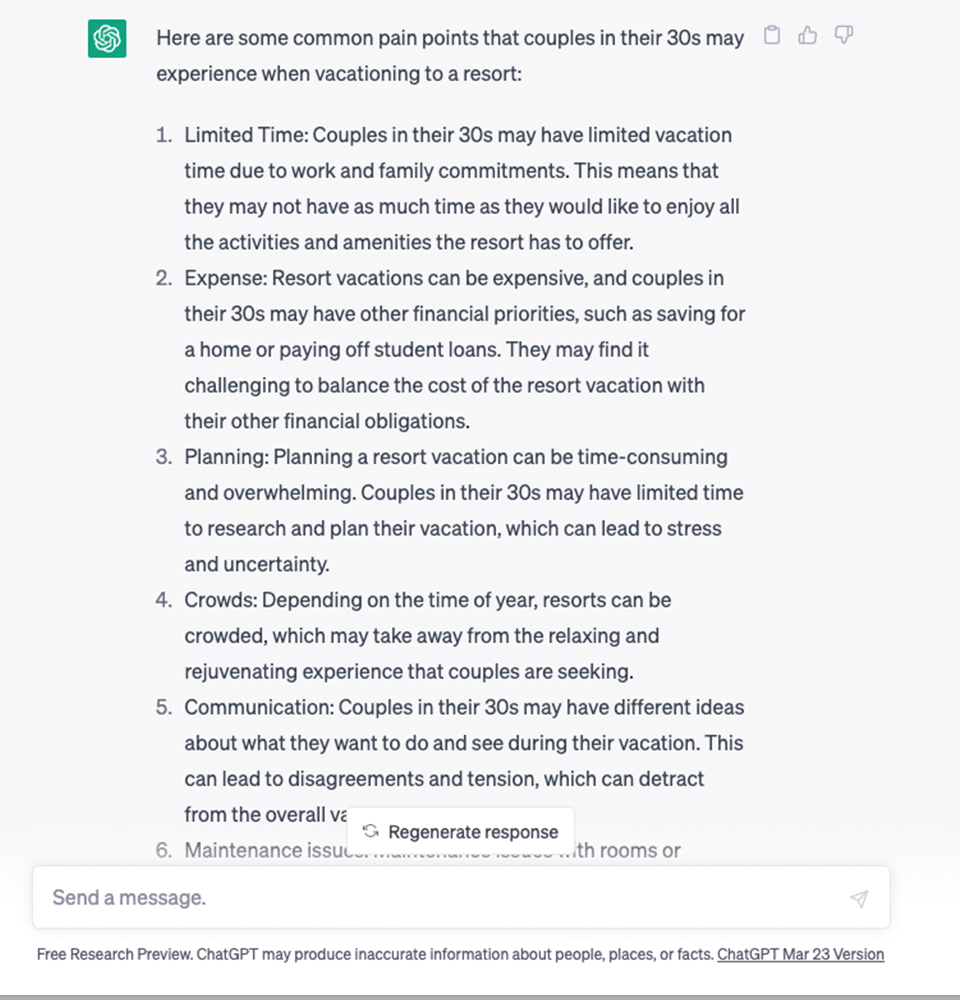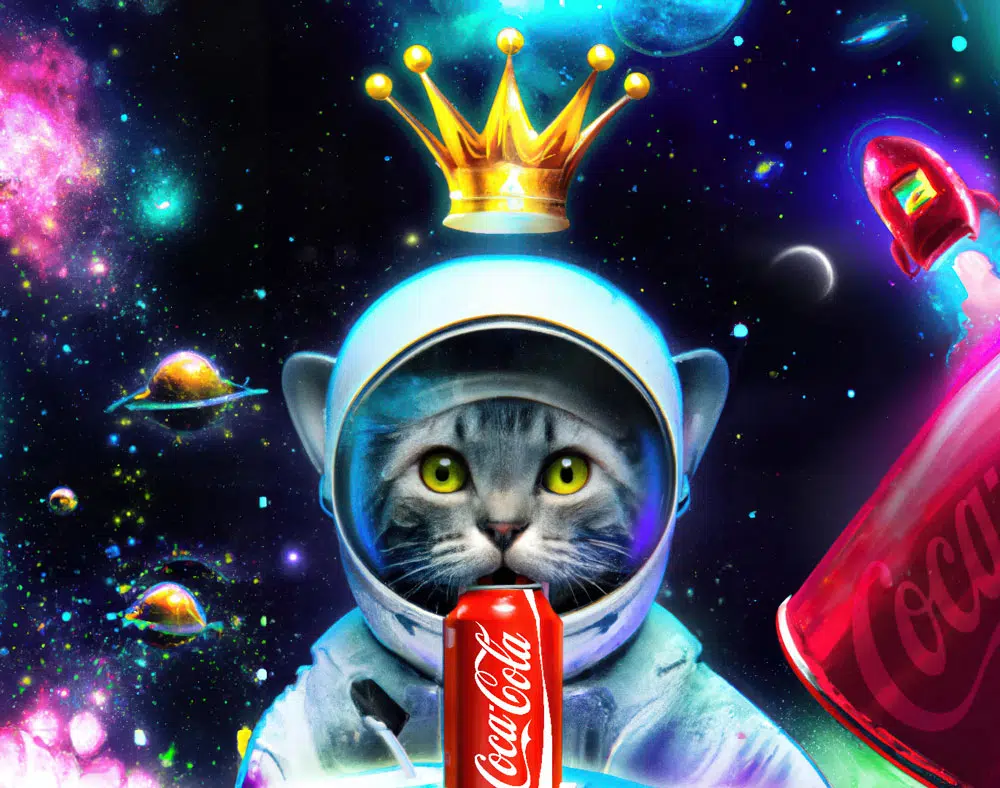ETIP #299
6 Ways to Boost Creative with AI

You might be living under a rock if you haven’t been hearing all of the buzz about generative AI. It’s not coming, it’s already here – showing up in just about every facet of marketing, advertising, research and design. Even as we write this eTip, Google will have over 20 artificial intelligence products launching this year alone and ChatGPT is now the fastest-growing consumer app in history — reaching more than 100 million monthly active users just two months after launch. To put that in perspective, it took TikTok about nine months to reach 100 million users and Instagram 2½ years, according to data from Sensor Tower. Insert gasp here. OK, now reality check.
Game changers, it’s time to get your game on.
There is no denying that we are living in a transformative moment with powerful possibilities unfolding before our very eyes. For those of us born into the MTV generation, the big disruptor upon us feels a bit like “Video killed the radio star,” leaving us all wondering what will happen to marketing as we know it today. We are turning another corner just as we did with the dawn of the Internet and mobile phones. But what’s notably different is AI’s speed to market, and with it comes equal parts anticipation and trepidation. As marketers, strategists and creatives, we’re grappling with AI’s burgeoning potential and the need for guardrails.
So rather than sit on the sidelines, Starmark creative teams jumped in to break off a small bite and experiment with how AI can boost the creative process.
Here’s what we found:
1. AI as an idea accelerant
Tools like Chat GPT and Bard can be used for information gathering and starting points.
For writers and art directors, AI can help with some of the analytical, fact-based thinking that can oftentimes be time consuming. This, in turn, frees up brainpower to devote to emotive efforts, like empathetic storytelling. In other words, AI can scoop up the data, while creatives provide the soul.
For instance, we asked GPT-4 to provide a list of four new potential marketing eTip topics for AI and here’s what we got:
- “Leveraging AI for Hyper-Personalized Marketing Campaigns”
- “The Ethics of AI in Marketing: Balancing Personalization with Privacy”
- “How AI is Revolutionizing Digital Advertising”
- “The Future of AI in Marketing: Predictions and Trends to Watch”
Now it’s just a matter of a little bit of research on each topic and adding the soul to the material. It’s important to note that AI is only trained through 2021 at the moment, so topics like emerging trends will require deeper research beyond a basic prompt. But it does help mitigate some of the “blank canvas” effect creators may sometimes experience.
2. Busting strategy silos
The most successful B2C and B2B campaigns have human truths or insights at their core. We can see a use case for AI to help inform creative briefs, revealing those insights and customer pain points sooner to serve as a springboard for creative concepting.
So let’s say you’re working on a new assignment for a resort geared towards mid-30s couples. An AI tool can shed light on the kinds of things these couples are most concerned about so that these insights can inform an emotive aspirational campaign rather than just an ad series with product features alone. In theory, finding these nuggets early in the process will make the concepts resonate effectively with focus groups and cut down on the number of creative rounds.

And that’s just a starting point. AI can also be a powerful assistant to enrich market research efforts (i.e. gathering demographic data, competitive deep dives, customer journeys and more). It can be used to look at trends — and ultimately understand our customers better. That said, we would never use AI data without human vetting and interpretation because AI platforms are built on machine learning and algorithms — not a person with reasoning abilities. In short, the machine has no way to know if what it’s saying is right or wrong without a human fact-checker.
3. Back pocket sketch artist
Anything you can imagine is possible. You just need to know the right tools and prompts. Let’s say you’ve got an original concept that needs a key visual to express the big idea. Text to image tools like Midjourney, Dall-e or Stable Diffusion can be used to generate high quality visuals and storyboard frames. We’ve used these tools for pitching new ideas. The takeaway: these tools allowed us to iterate faster and get comps in front of clients more quickly.

Example shoot storyboard
A couple of caveats:
Because we’re generating custom imagery based on machine learning, sometimes the results can be a bit bizarre-o. For example, in one experiment, a random head was placed on a couch in the midst of a family gathering. Jeepers creepers. However, with some diligence finding the right prompts, the AI can yield viable results that can then be enhanced manually in Photoshop or Premiere to achieve the desired results. As we heard during this year’s MMA POSSIBLE conference, what AI doesn’t do well (because it doesn’t have the faculty) is human judgment. Taking AI raw product and shaping it into usable art requires human intervention and the talents of a live team. So while AI is a great tool for ideation – it is NOT a replacement for human creators.
One watchout is that AI output in its current form can lack diversity due to inherent bias reflected in the materials used to train these models. For instance, if you use a generic image prompt, such as ‘a man eating an ice cream cone’, the resulting image will likely be of a white man, even though the vast majority of men in the world are not white. We hope to see this improve as usage becomes more widespread and models are further refined to mitigate inherent training bias.
Another consideration is copyright. There are growing ethical debates surrounding style, derivative works and intellectual property. AI essentially pulls images and text from a whole-internet repository and then uses algorithms and patterns to repurpose elements and make predictions to create new combinations. Any art or text you create with AI could be subject to a copyright violation (or at the very least not be copyrightable) since most of these tools are scraping images from various sources. Certain companies are developing copyright-compliant solutions. Getty Images is training their AI only on images they own. Once this tool is launched, when you request the Getty AI to create an image, you would be able to buy the rights to use that image safely. With so much gooey gray area, we would err on the side of caution here when it comes to commercial usage of AI output.
4. Streamlining content creation
AI tools like Runway can speed up more labor intensive processes, like silhouetting images or video. So if we needed to move our subject from an office to an oasis, it’s possible to get there in a fraction of the time. Add to that, AI can bring efficiencies to repetitive tasks, like creating multiple versions of an asset. This means faster turnaround times for clients on the receiving end.

Runway: AI-powered video editor
The ad used to be the atomic unit of advertising — is it a good ad or a bad ad. Now we can pull the ad apart into its components — images and text — and let AI optimize those downstream assets more effectively.
— Ben Jones, Creative Director for Google Creative Works
It’s also possible to use AI to squeeze more life out of an existing asset library. There are tools that bring stills to life as animated videos, erase things from videos, swap backgrounds, colorize, stylize… the possibilities go on. We can even isolate one clip from an existing video and add slo mo to re-envision the clip as an entirely new vignette that hones in on just one powerful moment. Imagine what that can do for your content plan. We see this exploding in popularity.
5. Driving deeper video engagement and CX
There’s loads of possibilities for video, including text to video, which basically creates real motion based on user prompts. Software like Synthesia can even serve up an on-camera announcer that looks like a real talking person (although, there is no substituting a real human!). However, for quick-turn training and how-to videos, this could be a great way to deliver at scale.
Likewise, voice AI tools like ElevenLabs use speech synthesis to deliver voiceovers based on pure text inputs. While the results are impressive, we’d be remiss if we didn’t say that there is no substituting a real human! However, for quick-turn training and how-to videos, AI tools could be a great way to deliver at scale.
Once in the mindset of AI, we were able to brainstorm solutions that build better 1:1 interactions earlier in the customer journey. Let’s say we’re creating a new campaign to attract Meeting Planners to a destination. We can use an AI concierge in our videos and chatbots on our website to provide a seamless customer experience, increase brand loyalty and ultimately drive conversions with this highly targeted B2B audience.
Leaning in further to video engagement, there are also tools like Suggested Shorts that, as the name implies, uses AI to identify the most engaging moments from long-form videos to create high-impact short-form videos for YouTube. Based on insights from the AI tool, these new shorts have the propensity to perform better, driving more views and monetization.
There are other ways AI can help reach more screens with tools that translate videos into multiple language tracks. The list goes on. As this technology takes off, we can see content and lift increasing exponentially.
6. Co-creation takes center stage
In today’s media environment, consumers aren’t sitting back and receiving one-way messages from brands. Instead, they’re driving the conversation.
To capitalize on the trend, brands can use AI to build one-of-a kind experiences and community. Bain & Company launched its “Create Real Magic” campaign for Coca-Cola as an experiment to see how creative fans could co-create content with a platform built on open AI tools. Here, users can create their own works of art using AI trained on iconic Coca-Cola images. While the campaign is still in its infancy, this experiment demonstrates how campaigns may soon become more collaborative with brands and move even quicker.

Image via The Coca-Cola Company
In this same spirit of democratizing brand content, there’s fertile ground for purpose driven AI that can be used to serve the collective good of communities — collaborating for a cause. There’s also huge opportunities to use AI for Web3. Adidas ran a campaign where users completed personality questions to generate their own custom AI avatars, which were then imported into Metaverse worlds.
Humans, where do we go from here?
We’ve come to the understanding that we can be friends with generative AI. Not as a replacement for real writers, designers and strategists who spark the ideas and tell big stories. Instead, AI can serve as an incredibly useful tool to help bring efficiencies and inspiration to the creative process. Because, at the end of the day we follow our hearts, our humanity and our Starmark mantra: Let’s create the future.
If you’d like to learn more about AI or run an AI experiment to help achieve your goals, get in touch.
